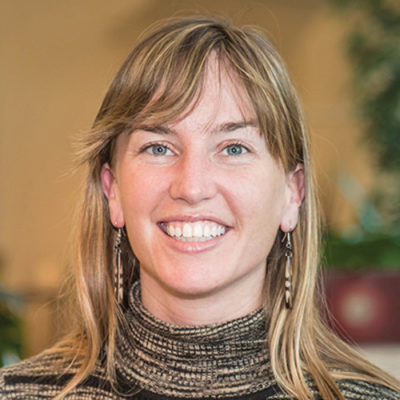 We’re racking up a huge ecological debt due to mass deforestation. The Earth is losing rainforests at a rate of 30 football fields per minute, and they’re being converted into more “economically productive” resources for things like mining or industrial agriculture. This has turned the world’s largest terrestrial carbon sink into our second largest source of climate-changing greenhouse gas emissions.
We’re racking up a huge ecological debt due to mass deforestation. The Earth is losing rainforests at a rate of 30 football fields per minute, and they’re being converted into more “economically productive” resources for things like mining or industrial agriculture. This has turned the world’s largest terrestrial carbon sink into our second largest source of climate-changing greenhouse gas emissions.
A lot of this is happening because we’re not properly valuing our forests—because historically, we haven’t had the tools to measure their impact. And when it comes to creating better forest management practices, you can’t fix what you can’t see.
But remote sensing technologies can help change the landscape of our forests’ future.
Lidar sensors enable us to directly measure forest carbon and thereby better understand the value of a given forest at a point in time. We now have the ability to combine lidar imaging with parallel advances in spaceborne remote sensing and machine learning to expand this valuation over time. With these technological advances, it’s becoming possible to practically and cost-effectively measure the services forests provide in a spatially-explicit and global way, at high-frequency.
These are exactly the sorts of applications we’re seeing across a number of partners and customers at Planet, the leading provider of global, near-daily satellite imagery data and insights. Planet offers tools and information that can help humanity make informed, timely decisions and solve our world’s toughest challenges. In my role as Planet’s director of forest programs, I’ve had the opportunity to see our customers and partners building models trained with lidar and powered by Planet data. Arizona State University, SaloAI and Pachama are organizations making it easier than ever to account for the services forests provide in economic and policy decisions, leading to better outcomes for climate change mitigation, biodiversity conservation and wildfire preparation.
Remote sensing technology is one of our best tools to help build a better, greener world, and I know this because I’ve dedicated myself to forest preservation for the last 12 years.
Over a decade ago, I was working with development aid projects in a rural village in northern Nicaragua. The region was economically dependent on coffee farming; smallholders supplied multinational commodities corporations with coffee beans. Livelihoods depended on the health of fields and crops, which in turn relied on the health of local watersheds.
But the health of local watersheds was rapidly deteriorating. The most affordable source of household energy was firewood sourced from local forests, and the economic incentive to deforest surrounding hills was killing the economic production of the valleys. Economic incentives were actually hurting my community’s prospects for economic development.
Since then, I’ve worked with this community in mind to figure out how to change these perverse incentives, to better align natural and economic systems to create more sustainable pathways to economic development. Time and time again, I’ve come back to the realization that you can’t fix what you can’t see. Remote sensing and analytics technologies empower us to take action.
We need to create a world where forests are a valued use of land, where communities have more choice than racking up ecological debts in order to receive short-term high-interest loans. The combination of remote sensing and analytics technologies can help us get there.